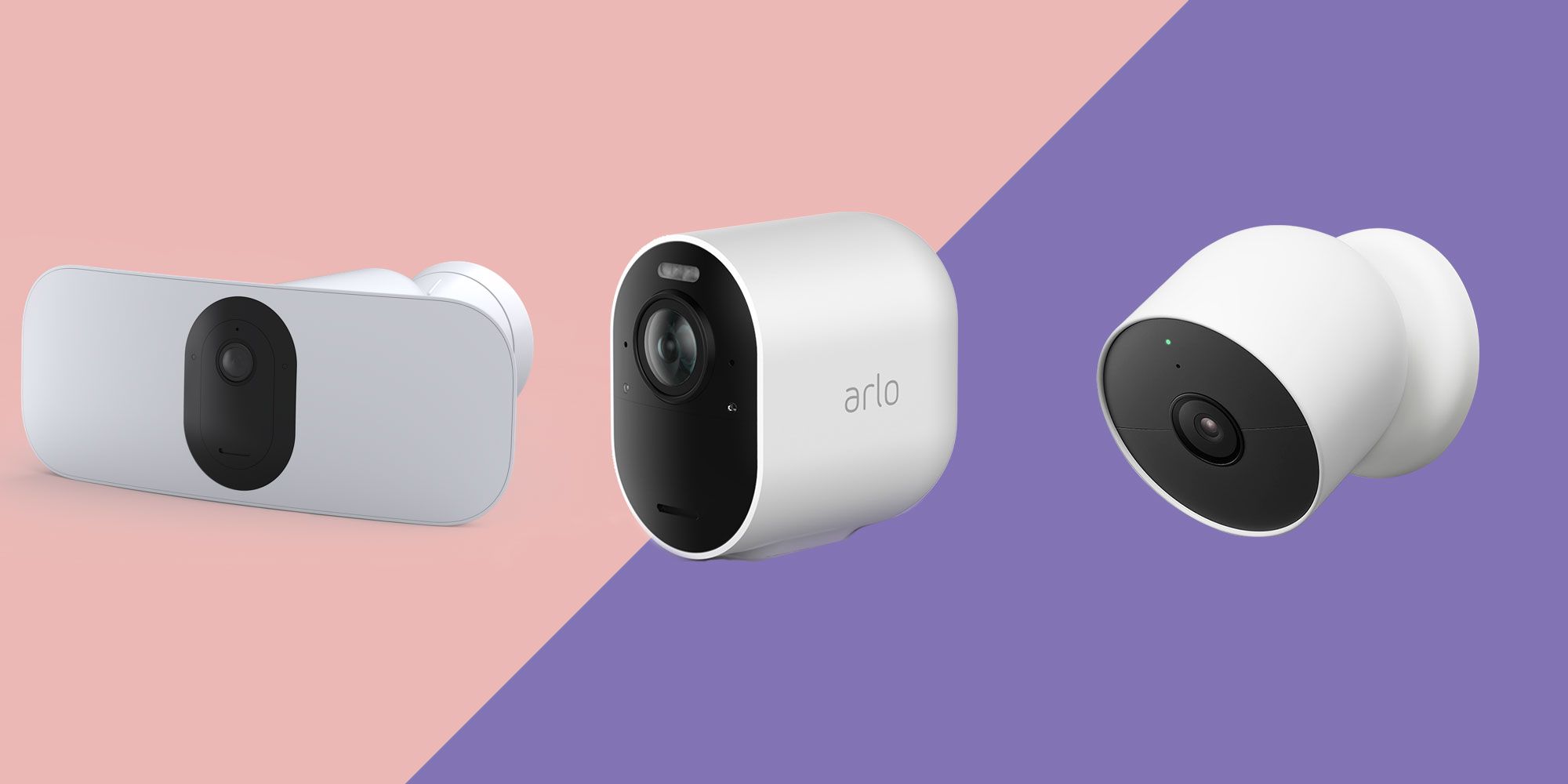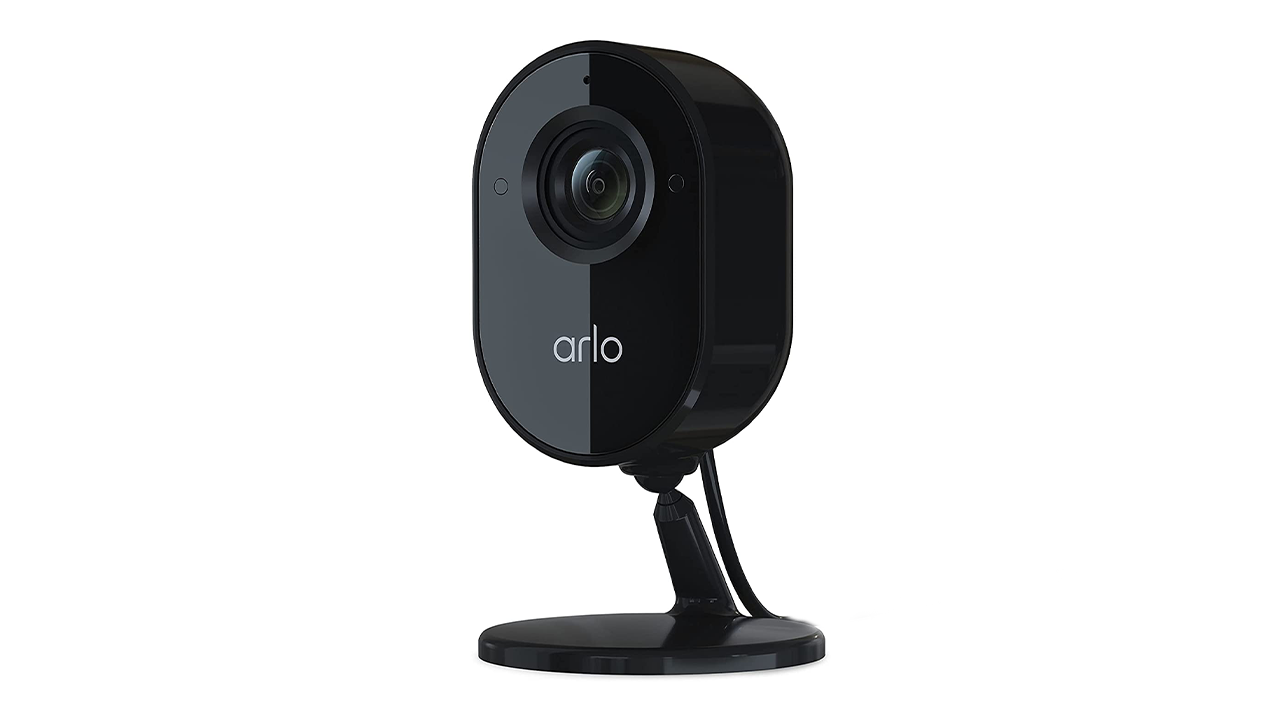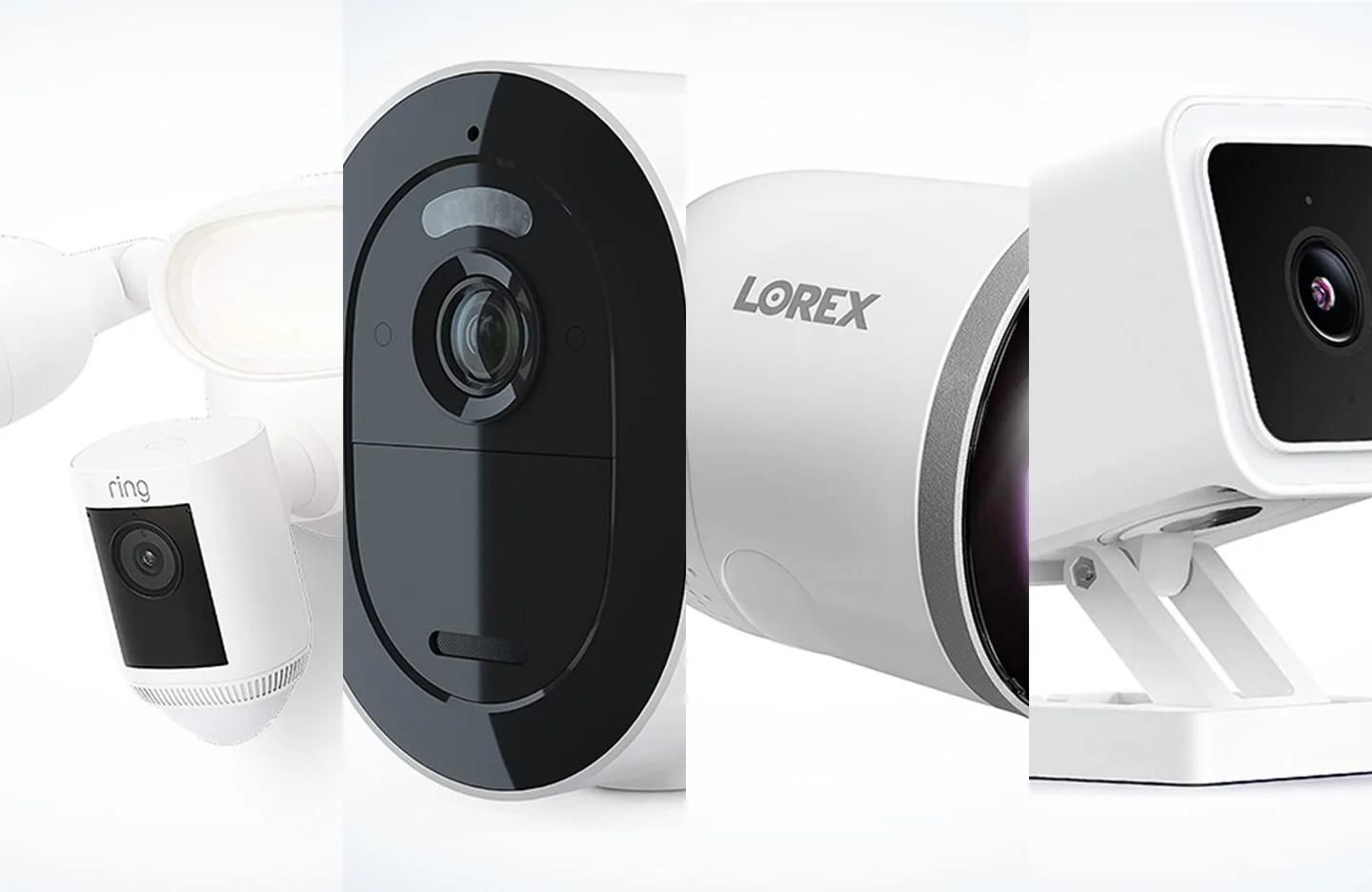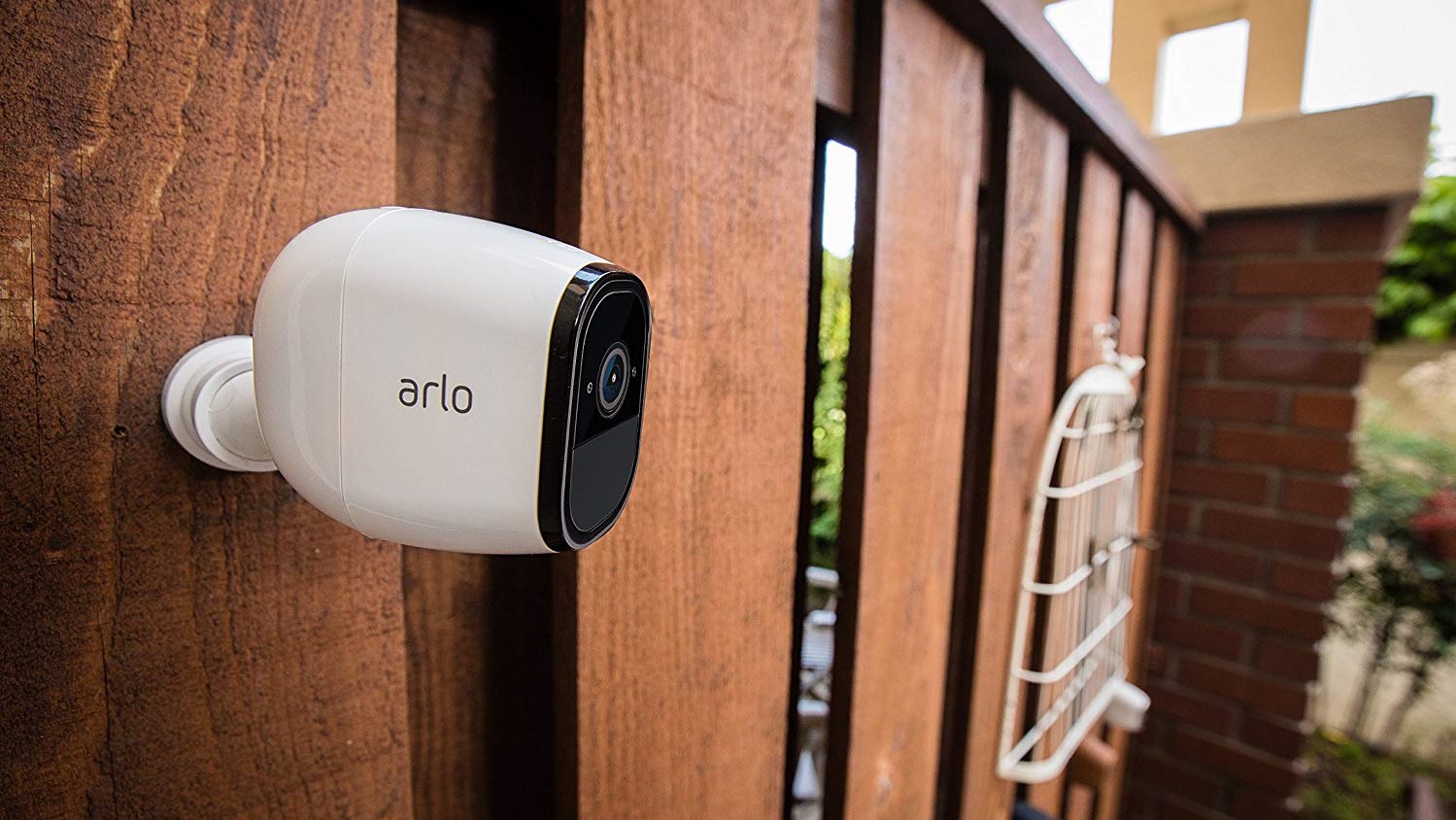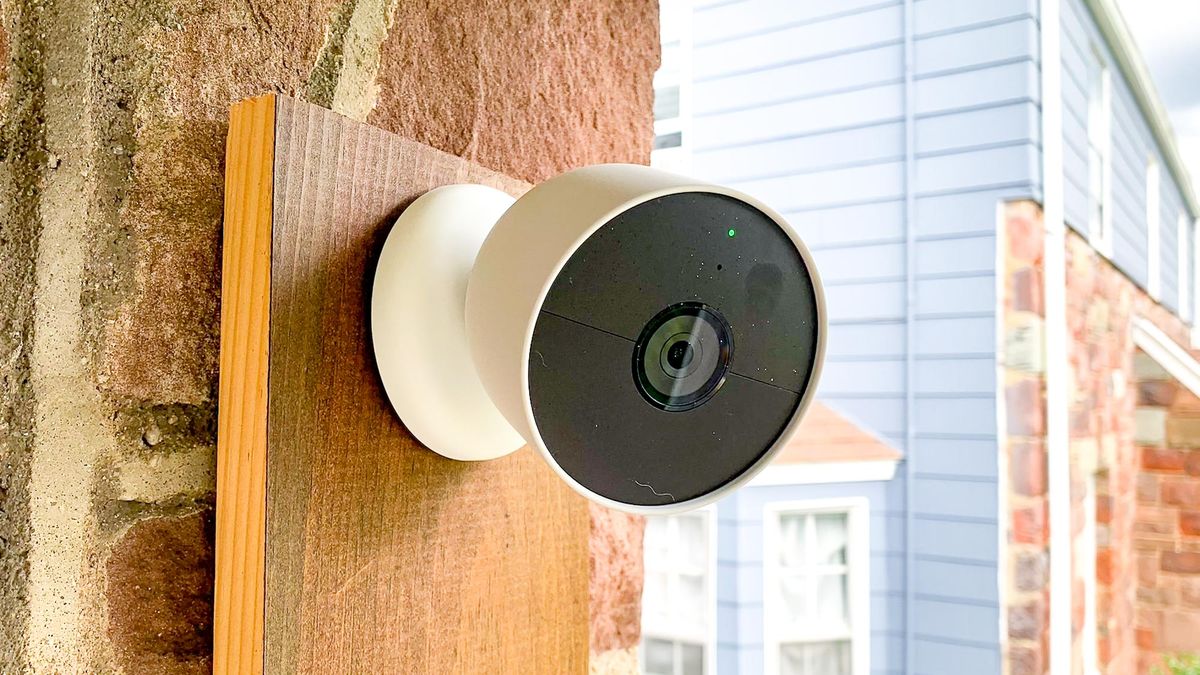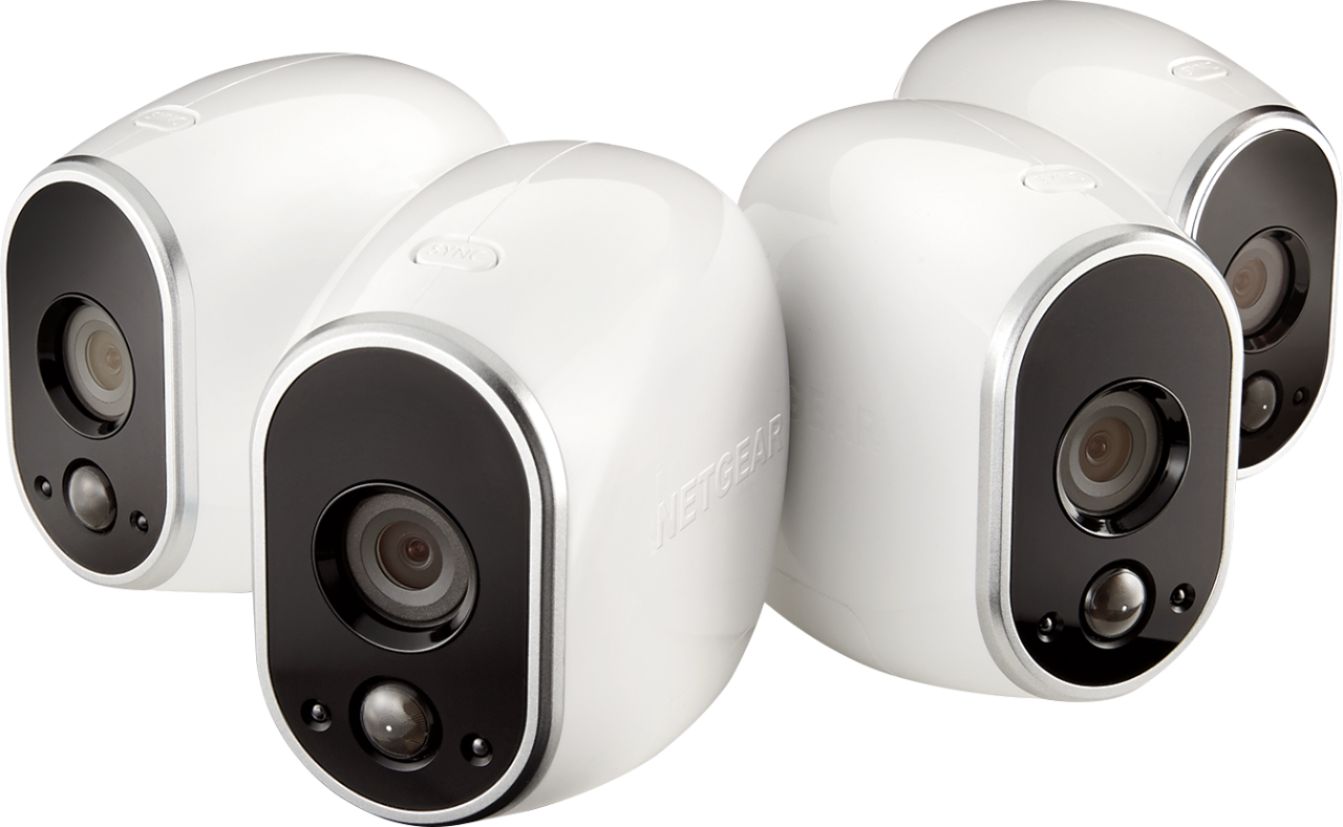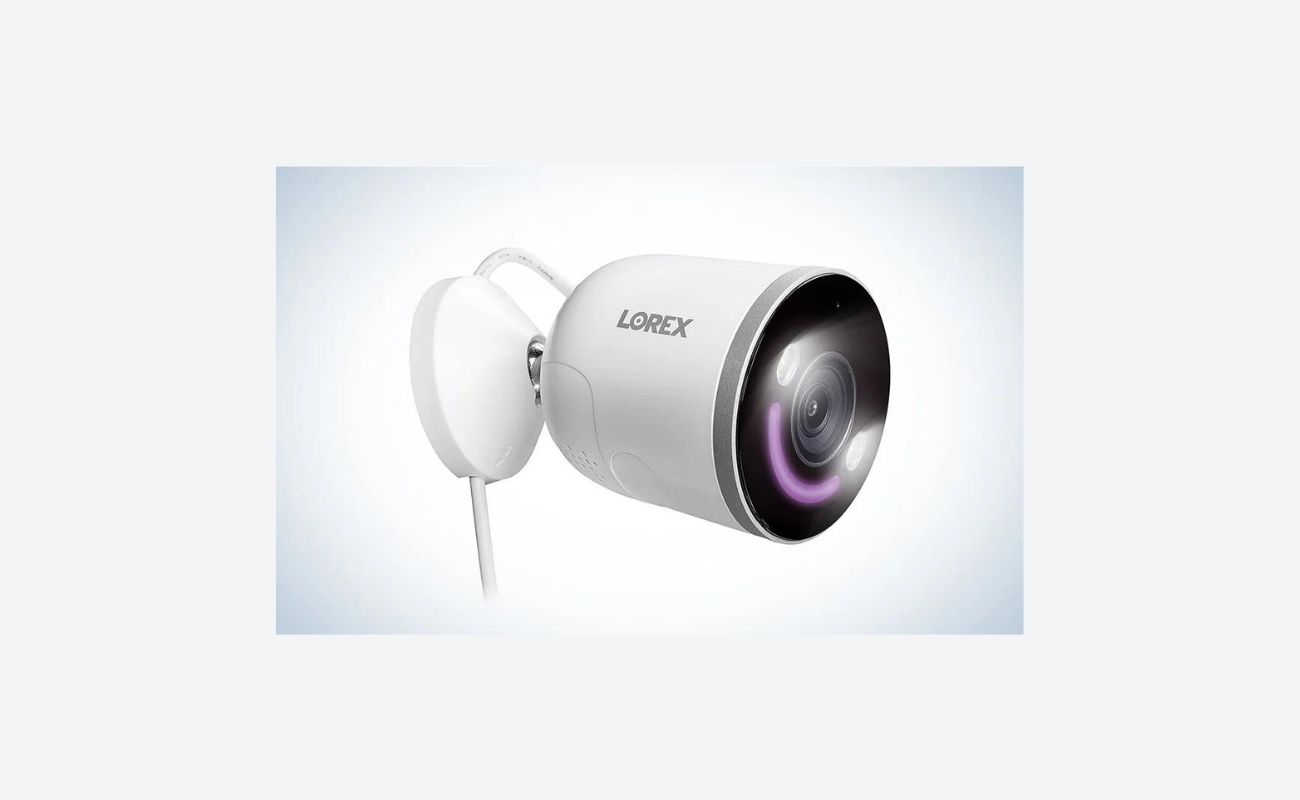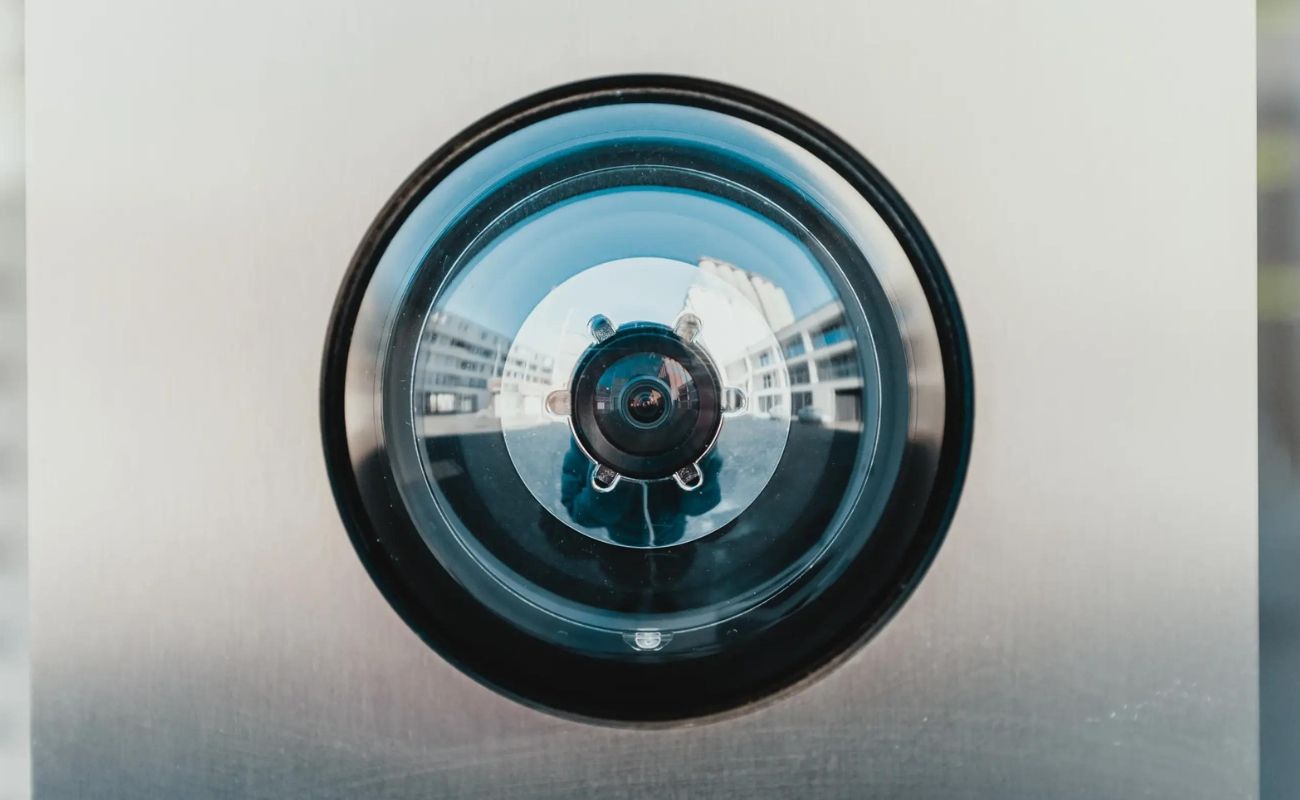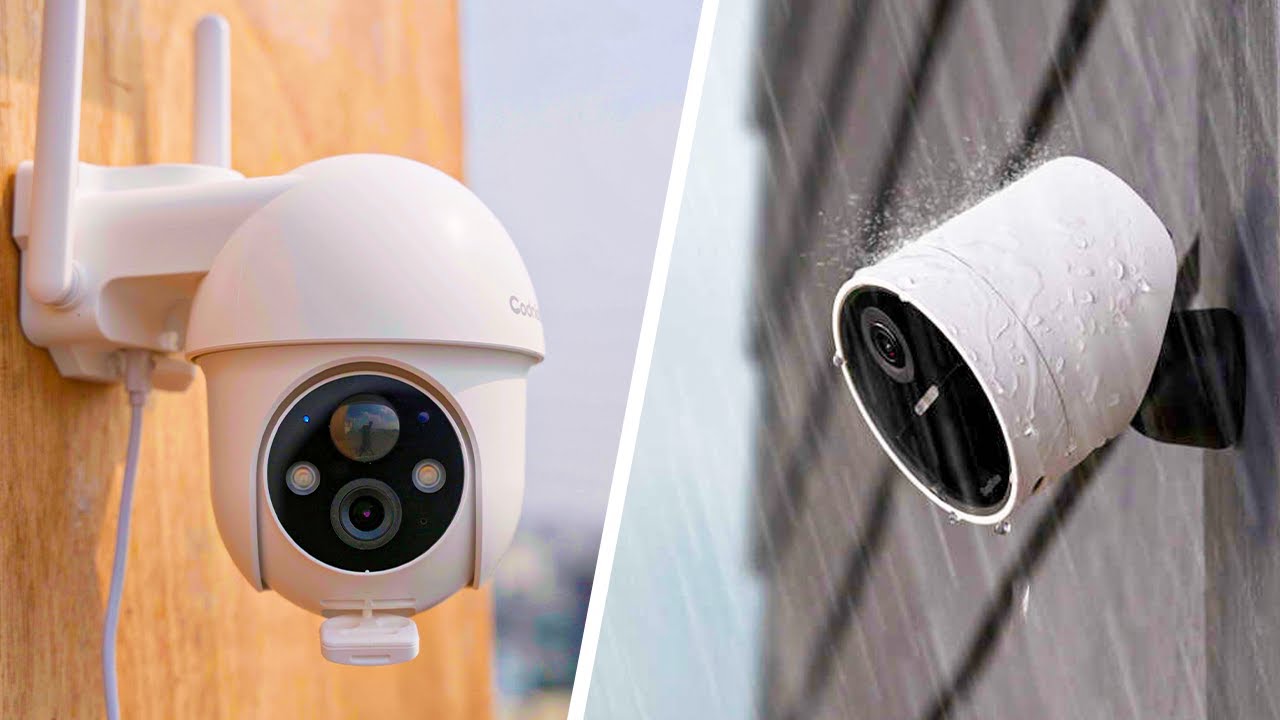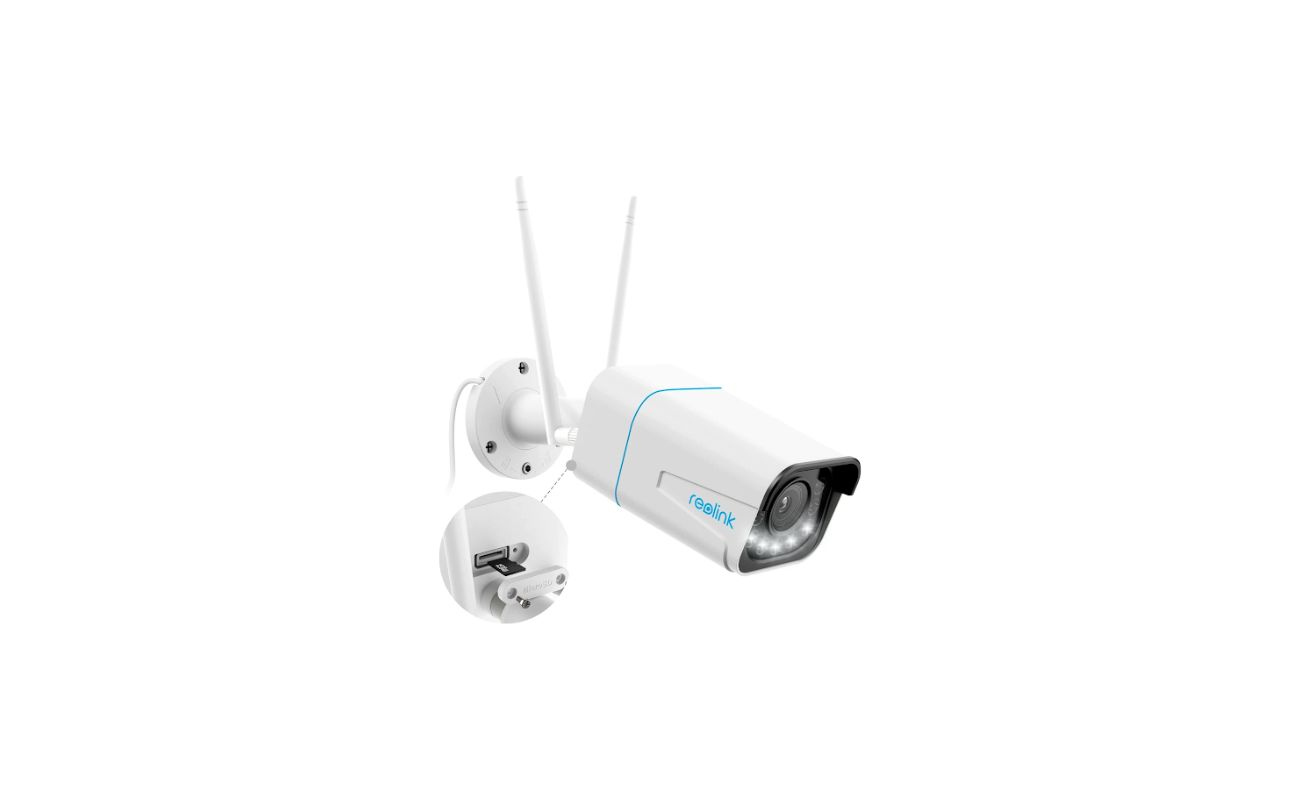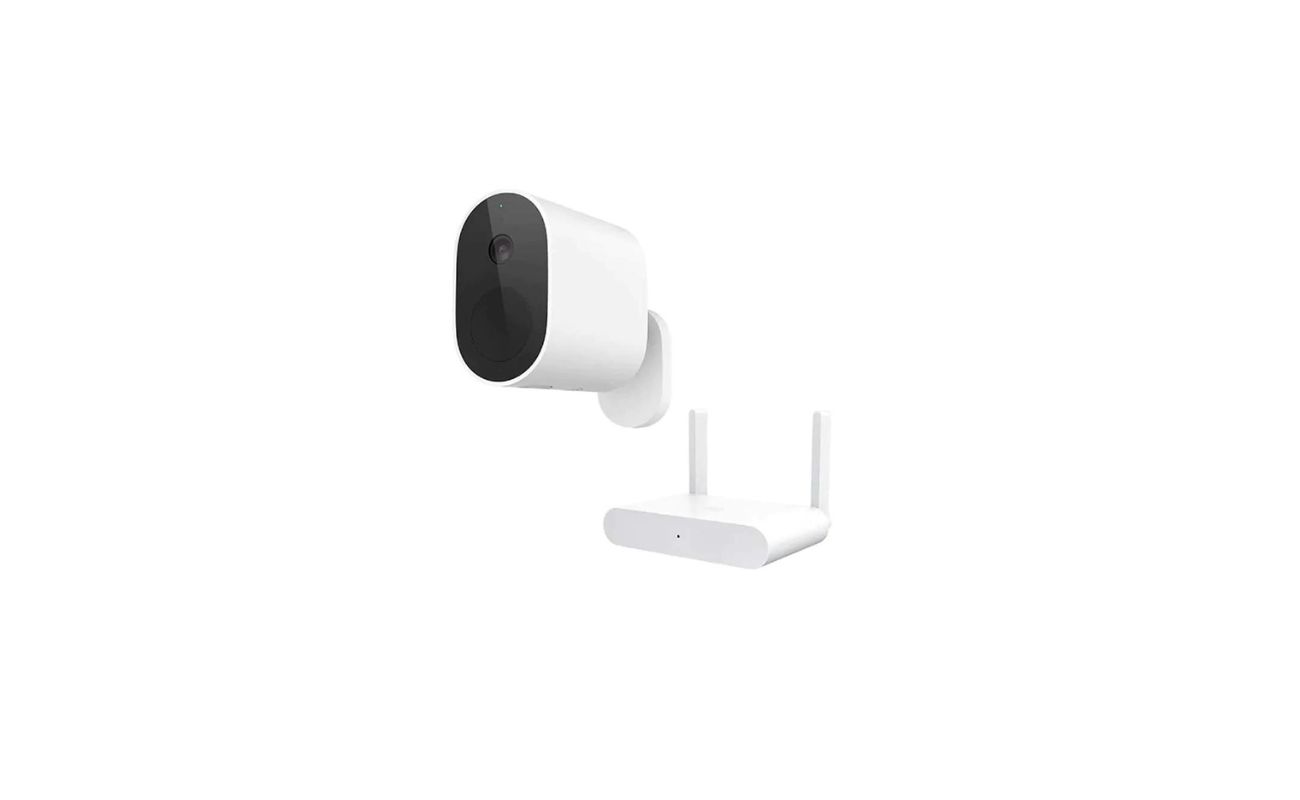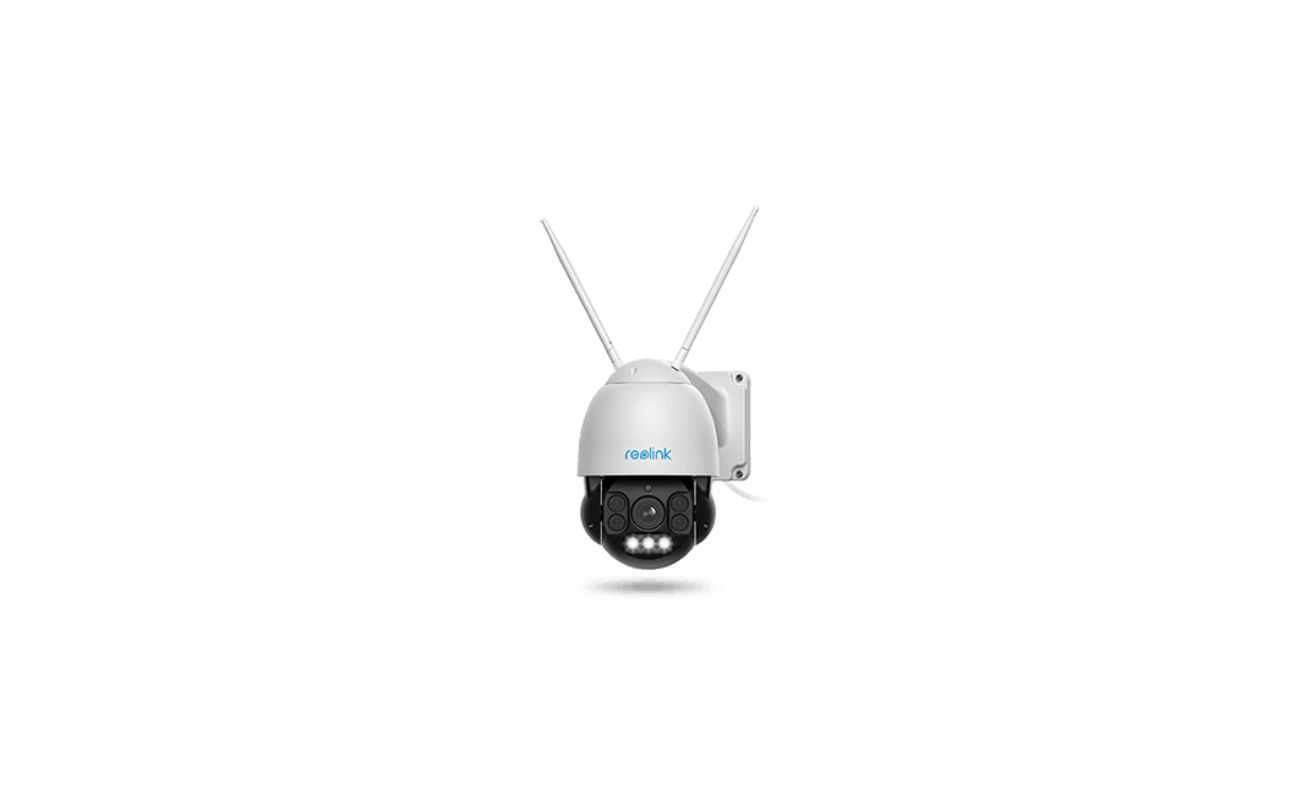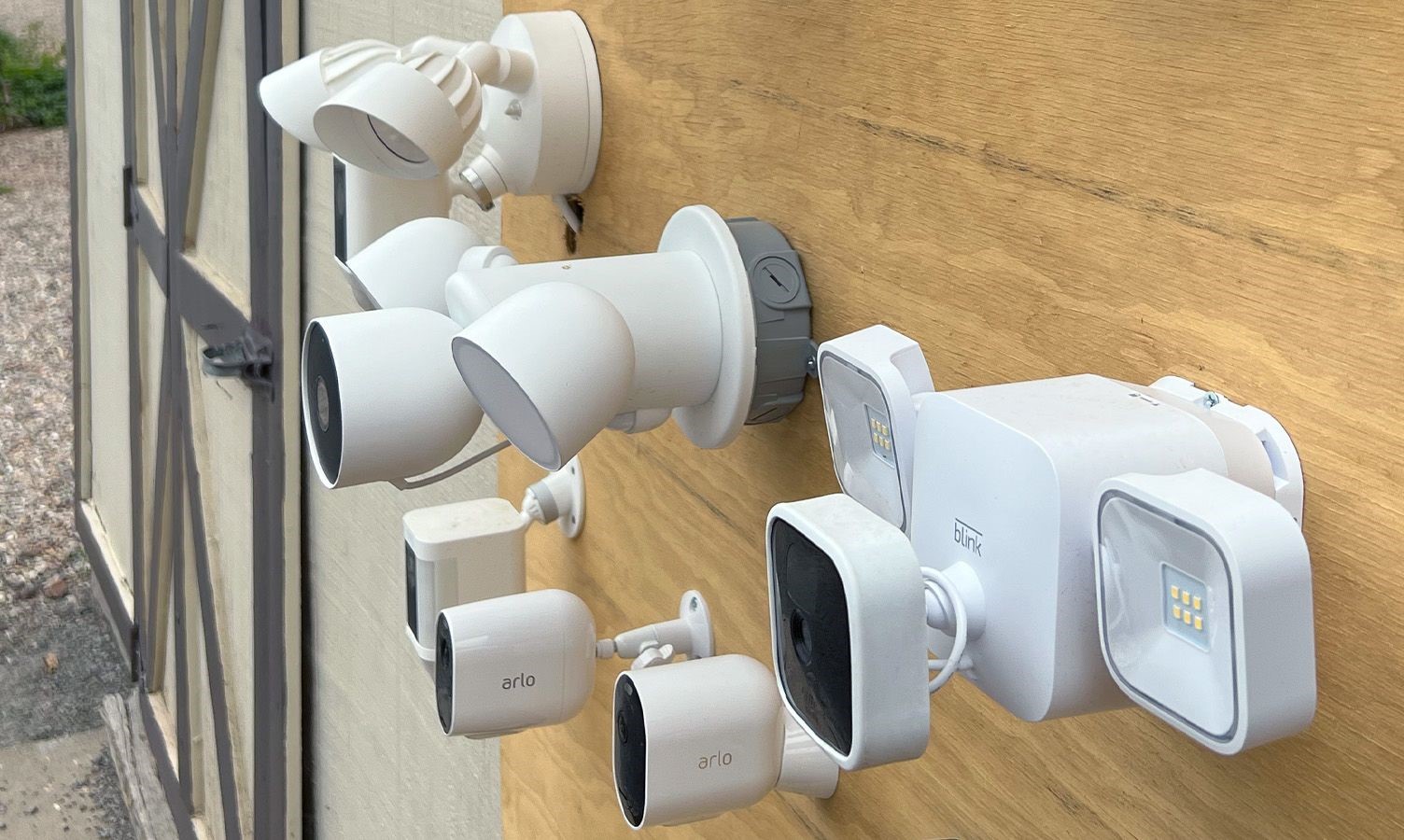Home>Home Security and Surveillance>What Is The Best Indoor Wireless Security Camera
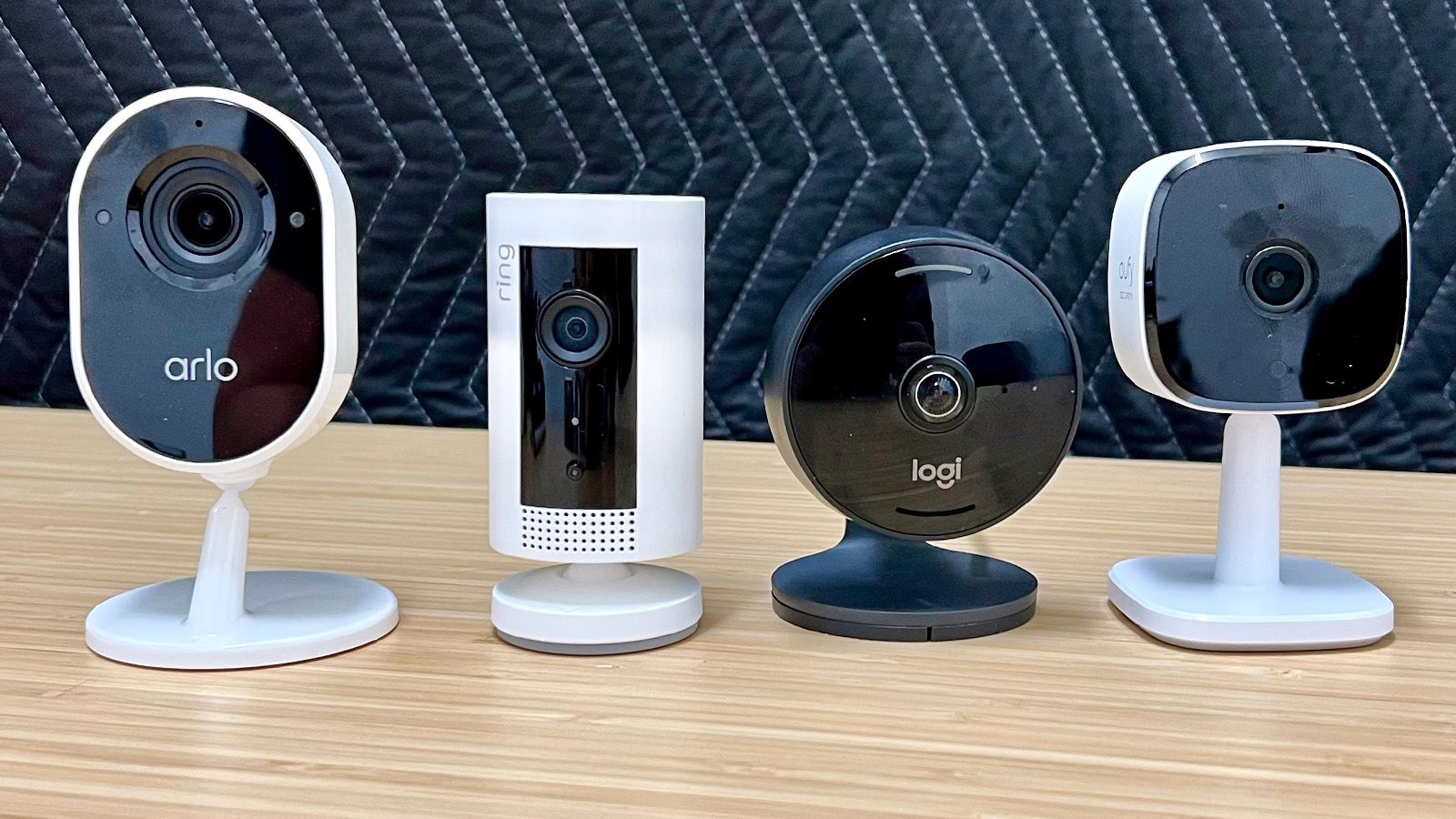

Home Security and Surveillance
What Is The Best Indoor Wireless Security Camera
Modified: March 6, 2024
Discover the best indoor wireless security camera for your home security and surveillance needs. Find top-rated options, read reviews, and choose with confidence.
(Many of the links in this article redirect to a specific reviewed product. Your purchase of these products through affiliate links helps to generate commission for Storables.com, at no extra cost. Learn more)
Introduction
Welcome to the world of home security and surveillance! With advancements in technology, protecting our homes and loved ones has become easier and more convenient than ever before. One crucial component of a comprehensive home security system is the indoor wireless security camera.
Indoor wireless security cameras serve as the eyes and ears of your home, allowing you to monitor your property and loved ones even when you’re not physically present. These cameras offer numerous benefits, including flexibility in placement, easy installation, and remote access to live video feeds.
In this article, we will explore the factors to consider when choosing an indoor wireless security camera, review some of the top options available on the market, compare their features and specifications, discuss their pros and cons, provide an installation and setup guide, and offer tips for maximizing their effectiveness.
Whether you’re a homeowner looking to enhance your home security or a renter who wants to feel safer in your space, investing in an indoor wireless security camera is a wise decision. Let’s dive in and discover the best options available to meet your specific needs!
Key Takeaways:
- Choose an indoor wireless security camera with high resolution, wide field of view, and reliable night vision for effective home surveillance.
- Maximize the effectiveness of your indoor wireless security cameras by strategic placement, regular maintenance, and integration with other security measures.
Factors to Consider When Choosing an Indoor Wireless Security Camera
When it comes to selecting the right indoor wireless security camera for your home, there are several important factors to consider. By understanding these factors and their impact on your surveillance needs, you can make an informed decision that best suits your requirements. Here are some key considerations:
- Resolution: The camera’s resolution determines the clarity and quality of the video footage. Look for cameras with high resolutions, such as 1080p or even 4K, to ensure sharp and detailed images.
- Field of View: The field of view refers to the area that the camera can capture. A wider field of view allows you to monitor more space. Consider your specific needs and the size of the area you want to cover when selecting a camera with an appropriate field of view.
- Night Vision: If you need to monitor your property during nighttime hours, choose a camera with reliable night vision capabilities. Look for features like infrared LEDs that provide clear footage even in complete darkness.
- Two-Way Audio: Two-way audio allows you to listen and speak through the camera. This feature can be useful for communicating with family members or deterring intruders. Make sure the camera has a built-in speaker and microphone for clear audio quality.
- Storage Options: Consider how the camera stores footage. Some cameras offer local storage options, such as SD cards, while others rely on cloud storage. Evaluate the availability, cost, and security of these storage options to determine which is best for you.
- Mobile App Compatibility: Look for cameras that are compatible with mobile apps, as they allow you to remotely access and control the camera from your smartphone or tablet. Ensure that the app is user-friendly and provides an intuitive interface.
- Motion Detection: Cameras with motion detection capabilities can send instant notifications to your smartphone when movement is detected. This feature is especially useful for keeping an eye on unexpected activities and potential intrusions.
- Integration with Other Smart Home Devices: If you already have a smart home ecosystem, it’s worth considering cameras that can seamlessly integrate with your existing devices. This allows you to create unified automation and control systems for enhanced convenience.
- Budget: Last but not least, determine your budget. Cameras come in a wide range of price points, so it’s important to find one that meets your needs without exceeding your financial limits. Remember to consider ongoing costs such as subscription fees for cloud storage.
By taking these factors into account, you can narrow down your options and choose an indoor wireless security camera that aligns with your specific requirements and provides reliable and effective surveillance for your home.
Top Indoor Wireless Security Cameras in the Market
Now that we’ve discussed the factors to consider, let’s explore some of the top indoor wireless security cameras available in the market today. These cameras have been selected based on their features, performance, customer reviews, and overall value for money:
- Wyze Cam Pan: With its affordable price tag and impressive features, the Wyze Cam Pan is a popular choice. It offers 1080p HD resolution, 360-degree pan and tilt capabilities, two-way audio, and night vision. The camera also has motion tracking, which automatically follows and records any movement within its field of view.
- Arlo Pro 3: The Arlo Pro 3 is a highly versatile camera with 2K HDR resolution, a 160-degree field of view, and a built-in siren. It supports both local and cloud storage options and offers advanced features like color night vision and customizable activity zones. The camera is also weather-resistant, making it suitable for both indoor and outdoor use.
- Nest Cam IQ Indoor: The Nest Cam IQ Indoor combines sleek design with advanced features. It boasts 4K HD resolution, a 130-degree field of view, and integrated Google Assistant for voice commands. The camera uses facial recognition technology to differentiate between familiar faces and strangers and sends alerts accordingly. It also has a built-in speaker with noise and echo suppression for clear two-way audio.
- Ring Indoor Cam: The Ring Indoor Cam is a compact and affordable option that doesn’t compromise on performance. It offers 1080p HD resolution, a 140-degree field of view, and night vision for round-the-clock monitoring. The camera integrates seamlessly with the Ring ecosystem, allowing you to control and view your camera feeds through the Ring mobile app.
- Google Nest Cam Indoor: The Google Nest Cam Indoor combines simplicity and reliability. It features 1080p HD resolution, a wide 130-degree field of view, and night vision. The camera integrates with Google Assistant, which enables voice control and smart home integration. It also offers cloud storage options for storing your video footage.
Remember, these are just a few options available in the market, and the best camera for you ultimately depends on your specific needs and preferences. Take the time to research each camera, read customer reviews, and compare their features to make an informed decision.
Next, let’s dive into a detailed comparison of the features and specifications of these top indoor wireless security cameras to help you further narrow down your options.
Comparison of Features and Specifications
When choosing an indoor wireless security camera, it’s important to compare the features and specifications to determine which one best suits your needs. Here’s a detailed comparison of the top indoor wireless security cameras mentioned earlier:
| Camera Model | Resolution | Field of View | Night Vision | Two-Way Audio | Storage Options | Mobile App Compatibility |
|---|---|---|---|---|---|---|
| Wyze Cam Pan | 1080p HD | 360-degree pan & tilt | Yes | Yes | Local & cloud | Yes |
| Arlo Pro 3 | 2K HDR | 160-degree | Yes | Yes | Local & cloud | Yes |
| Nest Cam IQ Indoor | 4K HD | 130-degree | Yes | Yes | Cloud | Yes |
| Ring Indoor Cam | 1080p HD | 140-degree | Yes | Yes | Cloud | Yes |
| Google Nest Cam Indoor | 1080p HD | 130-degree | Yes | Yes | Cloud | Yes |
As you can see, all of these cameras offer high-quality video resolutions and night vision capabilities. They also provide two-way audio communication, allowing you to interact with anyone captured on the camera’s feed. In terms of storage options, some cameras offer both local and cloud storage, giving you flexibility in managing your video footage.
Additionally, these cameras are compatible with mobile apps, enabling remote access and control. This means you can view live video feeds, receive notifications, and adjust camera settings directly from your smartphone or tablet.
While this comparison is based on important features and specifications, it’s also essential to consider other factors like pricing, additional features, customer reviews, and overall brand reputation. By thoroughly researching and analyzing all these aspects, you can make an informed decision and choose the indoor wireless security camera that best fits your specific requirements and preferences.
Now that you have a better understanding of the top options and their features, let’s explore the pros and cons of using indoor wireless security cameras.
Pros and Cons of Indoor Wireless Security Cameras
Indoor wireless security cameras offer numerous benefits for enhancing the safety and security of your home. However, it’s important to consider both the advantages and disadvantages before making your final decision. Let’s explore the pros and cons:
Pros:
- Flexibility in Placement: Indoor wireless security cameras are versatile and can be easily installed and moved around your home as needed. This flexibility allows you to monitor different areas and adjust the camera’s position based on changing security priorities.
- Easy Installation: Most indoor wireless security cameras are designed for simple do-it-yourself installation. They typically connect to your home’s Wi-Fi network, eliminating the need for complicated wiring.
- Remote Access: With mobile app compatibility, you can access your indoor wireless security camera’s live video feed from anywhere, anytime. This allows you to monitor your home remotely and receive notifications for any suspicious activity.
- Deterrence and Peace of Mind: The mere presence of indoor wireless security cameras can act as a deterrent to potential intruders. Knowing that their actions are being captured on camera can make criminals think twice before targeting your home. Additionally, having surveillance footage provides peace of mind as you can review any incidents or accidents that may have occurred.
- Integration with Smart Home Devices: Many indoor wireless security cameras can integrate seamlessly with other smart home devices, such as smart locks or voice assistants. This allows for convenient control and automation, enhancing your overall home security system.
Cons:
- Reliable Internet Connection: Indoor wireless security cameras function using your home’s Wi-Fi network. Therefore, a stable and reliable internet connection is essential for their proper operation. Any interruption in the internet can temporarily render the cameras ineffective.
- Dependence on Power Source: Most indoor wireless security cameras need a continuous power supply. This may require you to strategically place the cameras near power outlets or utilize extension cords, which could impact the aesthetics of your space.
- Privacy Concerns: The use of indoor wireless security cameras raises privacy concerns, especially if they are placed in areas where people expect privacy, such as bedrooms or bathrooms. It’s essential to respect the privacy of others and inform household members and guests about the presence of cameras.
- Cost of Additional Features: While many indoor wireless security cameras come with basic features, additional functionalities such as cloud storage, advanced motion detection, or facial recognition may require subscription plans or incur extra costs.
Considering the pros and cons can help you weigh the benefits and drawbacks of using indoor wireless security cameras. Assess your specific needs and priorities to make an informed decision that aligns with your home security goals and ensures the safety of your loved ones.
Now that you have a clear understanding of the advantages and disadvantages, let’s explore the installation and setup process for indoor wireless security cameras.
When choosing the best indoor wireless security camera, look for features such as high resolution, night vision, two-way audio, and motion detection. Consider the camera’s compatibility with smart home systems and the availability of cloud storage for video footage.
Installation and Setup Guide
Installing and setting up an indoor wireless security camera doesn’t have to be a complicated process. Here’s a step-by-step guide to help you get started:
- Choose the Right Location: Determine the areas you want to monitor and select suitable locations for your cameras. Consider factors such as the camera’s field of view, mounting options, and power source availability.
- Ensure a Stable Wi-Fi Connection: Make sure your home’s Wi-Fi network is stable and provides sufficient coverage in the areas where you plan to install the cameras. This ensures the reliability and consistency of the camera’s connection to the network.
- Power the Camera: Connect the camera to a power source. This usually involves plugging the camera into a standard power outlet or using a USB power adapter. Ensure that the camera is receiving power before proceeding.
- Download the Mobile App: Identify the mobile app associated with your camera and download it onto your smartphone or tablet from the respective app store.
- Create an Account: Open the app and follow the instructions to create a new account, if required. This may involve providing your email address, creating a password, and agreeing to the terms and conditions.
- Add the Camera to the App: Access the app’s settings and look for an option to add a new device or camera. Follow the on-screen instructions to connect the camera to your Wi-Fi network. This typically involves selecting your network from a list of available options and entering the Wi-Fi password.
- Configure Camera Settings: Once the camera is successfully connected, you can customize its settings through the app. This may include adjusting motion sensitivity, enabling notifications, configuring storage options, and setting up any desired automation or integrations.
- Mount the Camera: If your camera comes with a mounting bracket or adhesive, carefully install it in the chosen location. Ensure that the camera is securely attached and pointing in the desired direction for optimal monitoring.
- Test the Camera: Verify that the camera is functioning properly by accessing the live video feed through the app. Check for clear video and audio quality, test the motion detection and night vision features, and confirm that notifications are being received as expected.
Keep in mind that the installation and setup process may vary slightly depending on the specific camera model and manufacturer. Always refer to the manufacturer’s instructions and documentation for detailed guidance tailored for your camera.
By following these steps, you’ll be able to successfully install and set up your indoor wireless security cameras, providing you with the peace of mind and surveillance capabilities you desire for your home.
Now that your cameras are installed and set up, let’s explore some tips for maximizing their effectiveness.
Tips for Maximizing the Effectiveness of Indoor Wireless Security Cameras
Once you have installed and set up your indoor wireless security cameras, there are several tips you can follow to ensure they are maximally effective in enhancing your home security. Consider the following:
- Strategic Placement: Position your cameras in strategic locations to cover high-traffic areas, entry points, and valuable possessions. This ensures comprehensive surveillance and provides a deterrent effect.
- Optimize Field of View: Adjust the camera’s angle and positioning to optimize its field of view. Avoid obstructions such as furniture or plants that may interfere with the camera’s line of sight.
- Regularly Clean the Lens: Dust, dirt, or smudges on the camera lens can affect image quality. Clean the lens periodically with a soft, lint-free cloth to ensure clear and sharp video footage.
- Activate Motion Detection: Enable motion detection on your cameras and set up specific zones or areas for monitoring. This helps in minimizing false alerts and ensures that you are notified when there is actual movement in the designated areas.
- Upgrade Storage Options: Consider upgrading to cloud storage or adding additional local storage options if your camera supports it. This ensures that you have enough space to store your video footage, especially if there is a need to review previous recordings.
- Regularly Check Camera Performance: Periodically review the camera’s performance to ensure it is functioning properly. Do a test run of its features, including motion detection, night vision, and two-way audio, to ensure they are working as intended.
- Maintain a Strong Wi-Fi Connection: A stable and reliable internet connection is crucial for uninterrupted camera operation. Maintain a strong Wi-Fi signal in the areas where the cameras are installed by placing Wi-Fi extenders or repeaters if necessary.
- Secure Your Network: Protect your home network by using strong and unique passwords for your Wi-Fi and camera accounts. Regularly update the firmware of your cameras to ensure they are equipped with the latest security patches.
- Inform Family Members: Inform your family members and household occupants about the presence of indoor wireless security cameras. This promotes transparency and helps to maintain a sense of privacy and comfort within your home.
- Combine with Other Security Measures: Enhance the effectiveness of your indoor wireless security cameras by combining them with other security measures, such as outdoor cameras, motion sensor lights, or a monitored alarm system. This creates a comprehensive security ecosystem for your home.
By following these tips, you can ensure that your indoor wireless security cameras are operating optimally and providing you with the highest level of security and peace of mind.
Remember that each home is unique, so it’s important to adapt these tips to your specific circumstances and requirements. Regular monitoring and maintenance of your camera system will help ensure its ongoing effectiveness in protecting your home and loved ones.
Now that you are equipped with the knowledge to maximize the effectiveness of your indoor wireless security cameras, let’s wrap up our discussion.
Read more: What Are The Best Indoor Security Cameras
Conclusion
Indoor wireless security cameras are indispensable tools when it comes to safeguarding your home and loved ones. With their advanced features, ease of installation, and remote accessibility, they provide an extra layer of protection and peace of mind for homeowners.
In this article, we explored the factors to consider when choosing an indoor wireless security camera, reviewed some of the top options available in the market, compared their features and specifications, discussed the pros and cons, provided an installation and setup guide, and offered tips for maximizing their effectiveness.
When selecting an indoor wireless security camera, it’s important to take into account factors like resolution, field of view, night vision capabilities, storage options, and mobile app compatibility. Additionally, considering the pros and cons of using these cameras will help you make an informed decision that aligns with your specific needs.
Installation and setup of indoor wireless security cameras are relatively straightforward, and following the recommended guidelines ensures a smooth experience. By strategically placing the cameras, optimizing their field of view, and regularly maintaining them, you can enhance their effectiveness and ensure comprehensive coverage of your home.
Remember to prioritize network security, inform household members about the presence of the cameras, and consider integrating your camera system with other security measures for a holistic approach to home protection.
Whether you’re looking to monitor your home while you’re away or simply want to ensure the safety of your loved ones, investing in indoor wireless security cameras is a valuable decision. Choose a camera that suits your specific needs, follow the installation and setup guide, and implement the tips provided to make the most of your investment.
With the right indoor wireless security cameras in place and a well-thought-out security strategy, you can have peace of mind knowing that your home is protected and secure at all times.
Frequently Asked Questions about What Is The Best Indoor Wireless Security Camera
Was this page helpful?
At Storables.com, we guarantee accurate and reliable information. Our content, validated by Expert Board Contributors, is crafted following stringent Editorial Policies. We're committed to providing you with well-researched, expert-backed insights for all your informational needs.
